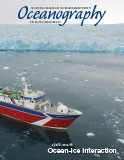Article Abstract
Climate, energy, and food security are three of the greatest challenges society faces this century. Solutions for mitigating the effects of climate change often conflict with solutions for ensuring society’s future energy and food requirements. For example, BioEnergy with Carbon Capture and Storage (BECCS) has been proposed as an important method for achieving negative CO2 emissions later this century while simultaneously producing renewable energy on a global scale. However, BECCS has many negative environmental consequences for land, nutrient, and water use as well as biodiversity and food production. In contrast, large-scale industrial cultivation of marine microalgae can provide society with a more environmentally favorable approach for meeting the climate goals agreed to at the 2015 Paris Climate Conference, producing the liquid hydrocarbon fuels required by the global transportation sector, and supplying much of the protein necessary to feed a global population approaching 10 billion people.

